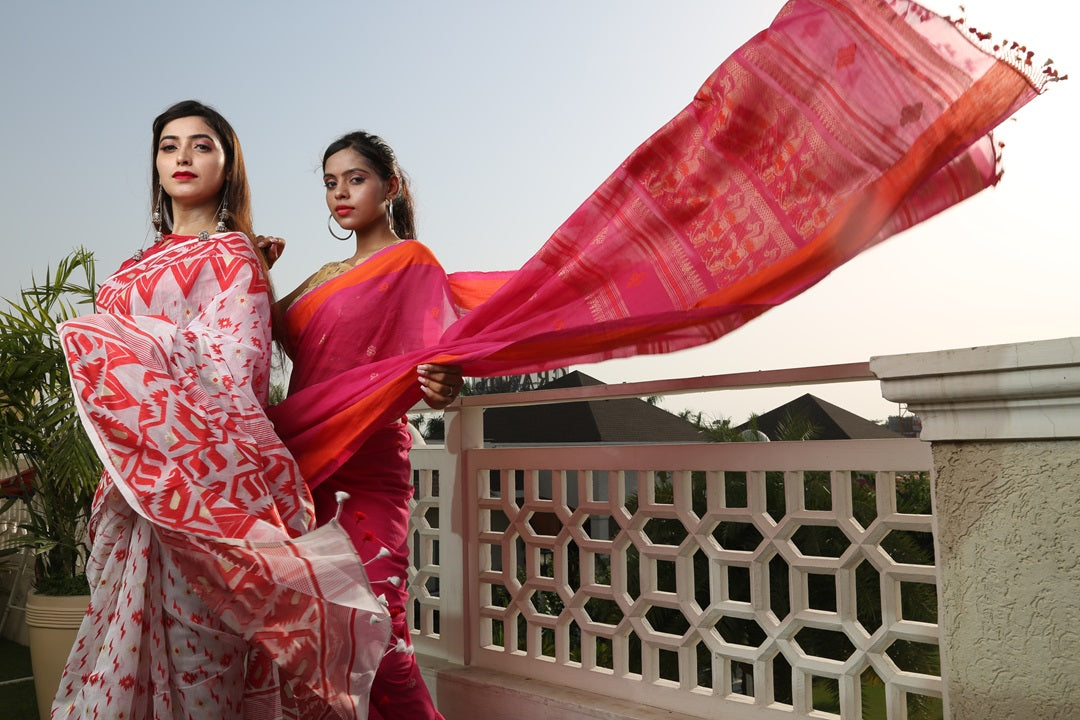Handspun Cotton
The moment you think of handspun cotton, the image of Mahatma Gandhi spinning this fabric on his charkha pops-up in one’s mind. Handspun cotton has long been associated with the freedom movement and the strong will of a nation to set itself free from the clutches of a century-long foreign rule.
While the usage of handspun cotton reduced post independence, this hand-woven fabric is now making a fashionable comeback.
To make handspun fabric, raw materials like cotton or silk are spun into threads on spinning wheels called charkhas. This spun yarn is then wound into reels and sent to weavers who in-turn weave this yarn into a fabric. The weaving of the yarn results in the creation of air pockets, which help one stay warm in winter and cool in summer.
On the whole, handspun cotton is a versatile and light fabric which makes it comfortable to wear and carry. It also lasts long and is used to make a large variety of items, one of which is obviously the saree. One important thing to note is that cotton is generally woven in this manner but the demand for different varieties has resulted in the use of other materials like silk and wool. Nonetheless, any silk or wool handspun clothing will have some percentage of cotton in it.
One variant of handspun silk is 50% cotton and 50% silk. This fabric is characterised by its sheen and luxurious appearance. It is more expensive than handspun cotton and must only be dry-cleaned as opposed to handspun cotton that needs to be starched so that it maintains its firm and crisp texture. Usually, the handspun silk fabric tends to shrink by 3% after the first wash.

Handspun cotton or silk sarees can be bought in various colours. Embroidery work, printed or hand-painted floral/animal motifs is done to decorate and add something extra to a simple handspun saree.
